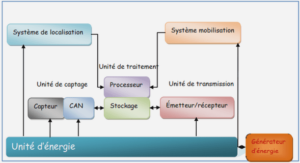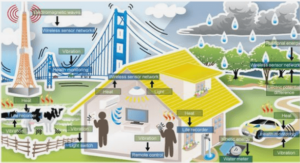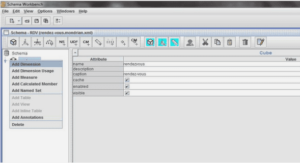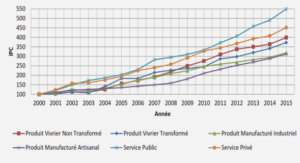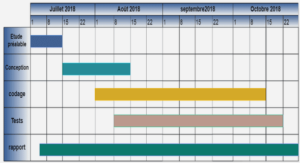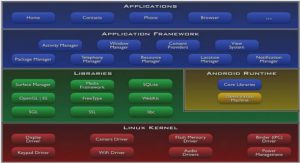EXTENDED ADD METHOD FOR DESIGN OF CONNECTORS
DESIGN MODEL FOR CONNECTORS BASED ON EADD
Introduction
In chapter 3, we developed the EADD design method to help developers create architecture design and select development tools according to functionalities and quality attributes. This chapter uses EADD to develop a model for design of connectors.
In the recent years, distributed system and relevant technologies have grown steadily. As a result, the design of connectors in distributed architecture makes architecture design become more complicated than the design in desktop applications. This is because the components are distributed in separate computers over the network and the traditional approaches to designing connector (for example, the method-based mechanism) are not directly available for interacting with the distributed components [Qiu, 2005] [Tanenbaum et al, 2007] [Tari et al., 2001]. In order to design connectors in distributed systems,multiple technologies are applied in practice. However, when facing these technologies, developers often meet some problems about the designand implementation of connectors.For example, messaging system or socket APIs (TCP/IP) is used to construct connectors in distributed systems for delivering messages in network. But they do not have the ability to build the relationship of components. On the other hand design pattern is most effective for building relationship when combined with aspect-oriented programming (AOP). However,AOP is merely applied to classes situated in local applications. As mentioned previously in section 2.6, AOP cannot be directly used in distributed systems. Furthermore, functionalities and qualities of connectors may be seldom discussed in the design process of connectors, particularly when these technologies are put togetherfor solving problems.
In this chapter, we focus on these design issues: i order to fully satisfy the functionalities and quality attributes of connectors, how to analyze and design connectors in distributed systems by weaving the relevant technologies together, such as design pattern, aspect-oriented programming, messaging system, network protocol and so forth. In the following content we present a new description about connectors. Next, we propose our design model to design connectors using EADD method in distributed systems. Finally, we perform an analysis of our design model.
New Definition of Connector
Connectors residing in distributed systems are frequently required to satisfy full functionalities: the transport of information, description of relationship, presentation of information, etc. Moreover, according to requirements of systems, connectors should normally be designed to achieve some system quality attributes, such as availability, modifiability, performance, security, testability, usability, and so forth. Today, these attributes have become key determinants of design of connectors.Thus, according to the functionalities and quality attributes of connectors, we provide a definition of software connectors:Connectors with high quality attributes are capable of linking components together, which implements information delivery by carrying wrapped data in certain formats; the delivery is based on some types of dependence (relationship) between components.
This definition covers all aspects of connectors including the quality attributes. In particular, it is well suited to the connectors in distributed systems. In the following content (sections 4.3 and 4.4), our design model is created according to the definition.
Life Cycle Model of Connectors
In distributed systems the working process of connectors can be separated into some working phases. Different phase has separate functionalities and corresponding quality attributes. In order to fulfill these requirements (functionalities and quality attributes) of connectors and based on finite state machine (FSM) theory [Wagner et al, 2006], we introduce a Life Cycle Model (called LCM model) of connectors which consists of 6 basic states: idle, connecting, disconnecting, active, modifying and error. These states can be used to represent all possible situations of connectors during working process. Below, we describe each state and relevant functionalities and quality attributes in detail. In idle state, connector is in an initial situation. It has nothing to do but to wait for the start commands. In connecting state, connector initiates the connection between components. In particular, it needs to build the relationship of components and should prepare all factors
|
Table des matières
CHAPTER 1: INTRODUCTION
1.1 Motivation
1.2 Example Scenario: A Push Mail Solution for Mobile Device
1.3 Statement of Problems
1.4 Contributions of the Thesis
1.5 Organization of the Thesis
CHAPTER 2: BACKGROUND AND RELATED WORK
2.1 Introduction
2.2 Middleware
2.2.1 TCP/IP and Sockets
2.2.2 RPC and Object Oriented Middleware
2.2.3 Message Oriented Middleware
2.2.4 Message Oriented Middleware and JMS
2.3 Web Services
2.4 Relationship between Components
2.4.1 Object Oriented Programing (OOP)
2.4.2 Design Pattern (DP)
2.4.3 Architectural Pattern
2.5 Message Construction
2.6 Aspect-Oriented Programming
2.7 Program Slicing
2.8 Quality Attributes of Connector
2.9 Attribute-Driven Design Method
2.10 Classification of Connectors
2.11 Conclusion
CHAPTER 3: EXTENDED ADD METHOD FOR DESIGN OF CONNECTORS
3.1 Introduction
3.2 Software Engineering and Design Methods
3.2.1 Software Development Process
3.2.2 Software Requirement Analysis
3.2.3 Architectural Design
3.2.4 Software Development Tools
3.3 EADD for Selection of Tools and Frameworks
3.3.1 Quality Attribute Supported by Tools
3.3.2 Quality Attribute Supported by Frameworks
3.3.3 EADD
3.4 Conclusion
CHAPTER 4: DESIGN MODEL FOR CONNECTORS BASED ON EADD
4.1 Introduction
4.2 New Definition of Connector
4.3 Life Cycle Model of Connectors
4.4 Layered Design Model Based on EADD and LCM
4.4.1 Active State of Connector
4.4.2 Connecting States of Connector
4.4.3 Disconnecting States of Connector
4.4.4 Error and Modifying States of Connector
4.5 Typical Approaches to Use of LDM Model in Practice
4.5.1 Typical development Tools and Approaches
4.5.2 Implementation of Architecture Design
4.6 Analysis of Design Model
4.6.1 Design Model in Software Development Process
4.6.2 Comparison with Existing Approaches
4.6.3 Analysis of Classification of Connectors
4.7 Conclusion
CHAPTER 5: CASE STUDY: A PUSH MAIL SOLUTION FOR WIRELESS NETWORK USING THE DESIGN MODEL
5.1 Introduction
5.2 Requirement Analysis
5.3 General Architecture Design of Connector
5.4 Detailed Architecture Design of Connector
5.4.1 Active State of Connector
5.4.2 Connecting State of Connector
5.5 Implementation
5.6 Conclusion
CHAPTER 6: CONCLUSIONS AND FUTURE WORK
6.1 Summary
6.2 Contributions
6.3 Future Work
6.3.1 Validation Model for Developing Connectors
6.3.2 Framework for Statistics
6.3.3 Taxonomy of Software Connectors
BIBLIOGRAPHIE
![]() Télécharger le rapport complet
Télécharger le rapport complet

